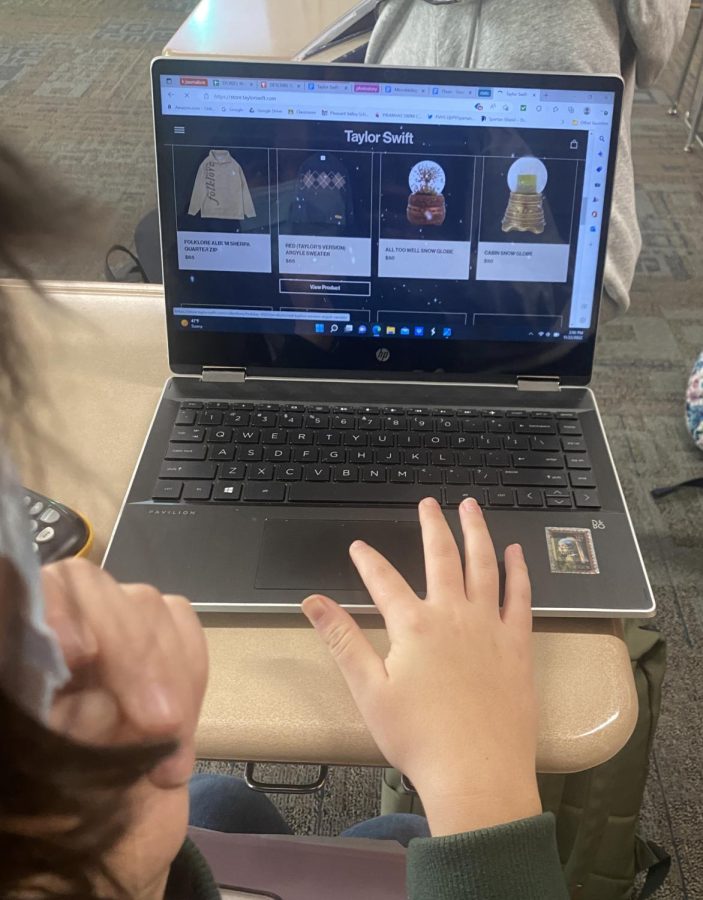In the past five years, Taylor Swift won 11 Grammy Awards, was named The Artist Of The Decade and doubled the size of her fanbase. Swift is arguably the biggest pop star of this generation, starting with her eponymous debut album released in 2006 when Swift was only 16 years old. Not only is Swift respected for her vocal talent and songwriting capabilities, but she also dominates from a business perspective. Swift’s multimillion-dollar empire is evident in the tours, merchandise and music she has continuously promoted over the past sixteen years.
Despite her undeniable success, fans have started to criticize Swift and her team for their shift in focus to making money and breaking records.
The fan of any artist understands that business and profit are the primary goals of the musician. Swift, especially with her massive, worldwide fan base, is an expert at branding her business. Her fans, “Swifties,” are extremely dedicated to not only her music, but also to her merchandise.
After Swift’s highly anticipated 10th studio album, “Midnights”, was announced in August, fans began eagerly waiting for the new music, merch and tour announcement. However, as the rollout of the “Midnights Era” unfolded, fans were left unsettled at the marketing compared to previous albums.
Across social media platforms, though primarily on TikTok, fans were quick to call out promotion tactics. Swift created four different cover versions of the album, something she’s never done before. Many fans collected all of them, buying the same vinyl or CD four times. For one song on the album, “Anti-hero”, Swift also created five different remixes. To listen to these tracks before they were released on streaming platforms the next day, fans had to pay $1.29 through her official website.
Even before the release of “Midnights,” fans commented on how frequent and excessively priced her merchandise releases were. Each time there was a countdown on her website, signaling a surprise, it ended up being new things to buy rather than a music related announcement. Senior Sam Christensen, a long-time Swiftie, has observed how Swift’s marketing has shifted through the years. “I think that now that she’s older and brand is so big, she does focus more on marketing for her albums. We especially saw this with ‘Midnights’ and all the collectables like the album clock,” she said.
Sparking even more controversy around Swift’s business decisions was the disaster of the presale and general admission sales of her upcoming tour. Although a majority of the trouble fans had with getting tickets for The Eras Tour can be attributed to Ticketmaster, some fans were also left questioning Swift. She and her team opted for dynamic pricing for the tour’s ticket sales. Dynamic pricing is a tactic used in sales where the price of tickets fluctuates based on demand. According to Ticketmaster, they never use dynamic pricing without consent from the artist.
Fans who admire Swift for her dedication to the fans wondered why she opted for dynamic pricing rather than keeping all tickets at face value. Christensen described her reaction trying to get tickets for the tour. “I understand that Ticketmaster is at fault in this situation, but I’m still bothered about the dynamic pricing knowing that she could have turned it off,” Christensen expressed. People were left asking if Swift was trying to ensure the best chances for every fan to get a ticket or if the underlying goal was to make as much money as possible.
Fans recognize Swift’s marketing as a common objective among all artists but something Swift does extremely well. Senior Sumika Thapa explained the vulnerability of the fanbase because of Swift’s chokehold on them. “I think that Taylor does love her fans a lot, more than most artists, but at the end of the day I still think Taylor would choose the money over her fans,” she said.
Like Thapa, many fans recognize the monopoly that Swift has created. As Swift’s following continues to grow, people will continue to call out sly marketing strategies that were previously ignored.









